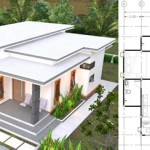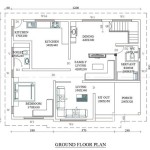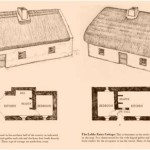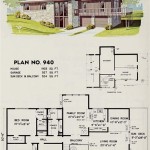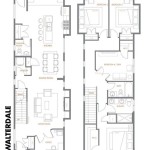Essential Aspects of Housing Floor Plan Design
The floor plan of a house is a critical aspect that determines the functionality, livability, and overall aesthetic appeal of the space. Careful consideration of various elements is crucial to create a well-designed floor plan that meets the needs and preferences of the occupants.
Functionality and Flow
A well-designed floor plan should prioritize functionality and flow. The layout of the rooms and the relationships between them should allow for smooth and efficient movement throughout the house. Common areas, such as the living room, dining room, and kitchen, should be easily accessible and interconnected.
Space Utilization and Efficiency
Effective floor plan design optimizes space utilization and efficiency. The size and shape of each room should be carefully planned to suit its intended purpose. Storage spaces, closets, and built-in features can be incorporated throughout the house to maximize storage capacity without sacrificing living space.
Natural Light and Ventilation
Floor plan design should take advantage of natural light and ventilation to create a comfortable and inviting living environment. Windows and doors should be strategically placed to allow ample natural light into the rooms. Cross-ventilation, facilitated by windows on opposite walls, helps circulate fresh air and regulate temperature.
Privacy and Separation
Balancing privacy and interconnectedness is essential in floor plan design. Bedrooms and private areas should be separated from common spaces to ensure privacy, while still maintaining a sense of connection to the rest of the house. Careful planning of hallways, doors, and visual connections can achieve this balance.
Aesthetic Appeal and Style
The floor plan should reflect the overall style and aesthetic preferences of the occupants. Symmetrical or asymmetrical layouts, open or compartmentalized spaces, and the placement of architectural features can all contribute to the visual appeal of the house.
Consideration for Accessibility
When designing a floor plan, it is important to consider accessibility for individuals with disabilities or mobility impairments. Wider doorways, ramps, and accessible bathrooms can enhance the comfort and safety of all occupants.
Professional Assistance
Creating a well-designed floor plan requires expertise and knowledge of building codes and regulations. It is highly recommended to seek the assistance of an experienced architect or building designer to ensure a floor plan that meets your specific requirements and meets industry standards.
By carefully considering these essential aspects, homeowners can develop floor plans that optimize functionality, flow, space utilization, natural light, privacy, and aesthetic appeal. With thoughtful planning and attention to detail, the floor plan can become the foundation for a comfortable, livable, and truly exceptional home.

Floor Plans Types Symbols Examples

House Plans How To Design Your Home Plan

Floor Plans Types Symbols Examples

Small House Design 2024005 Pinoy Eplans Modern Plans Floor

How To Draw A Floor Plan Live Home 3d

Small House Design 2024001 Pinoy Eplans Floor Plans

House Plans How To Design Your Home Plan

Floor Plans Types Symbols Examples

How Much Do 3d House Plans Cost Faqs Answered Cedreo

House Floor Plans Your Best Guide To Home Layout Ideas Decorilla Interior Design

